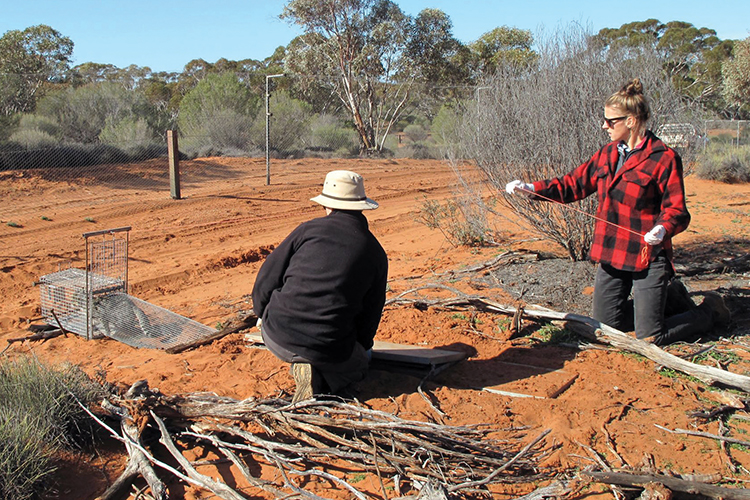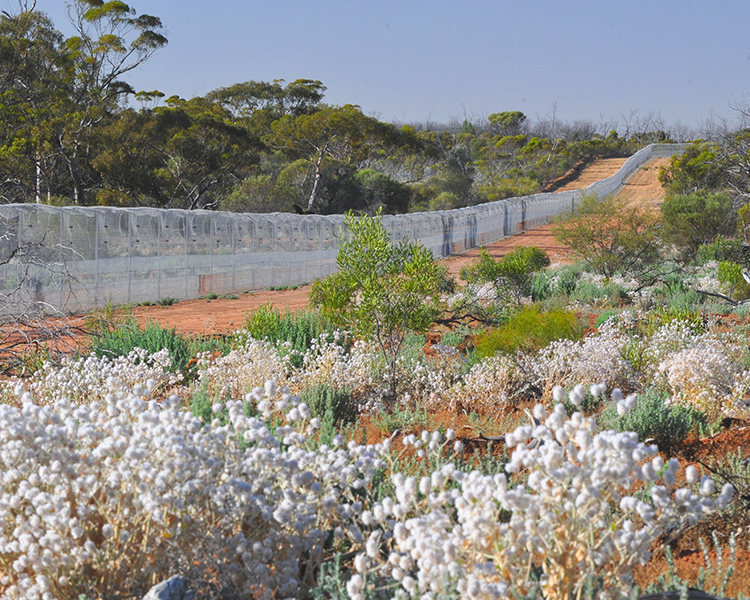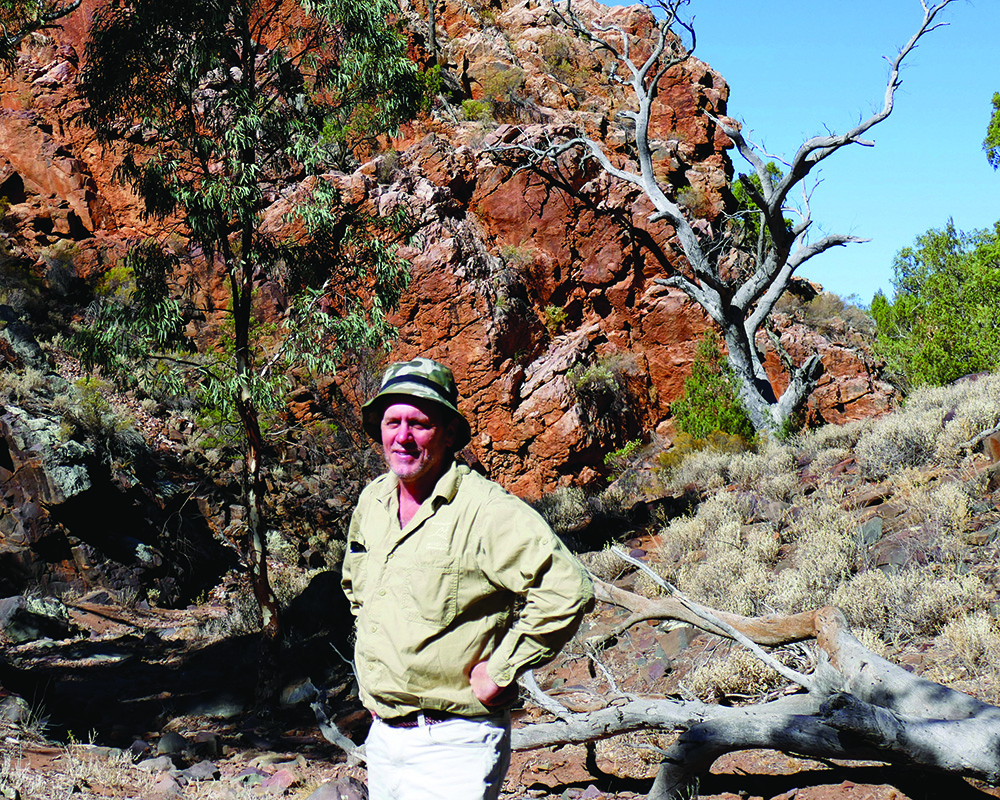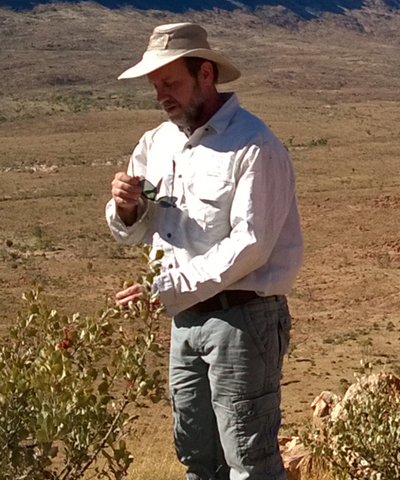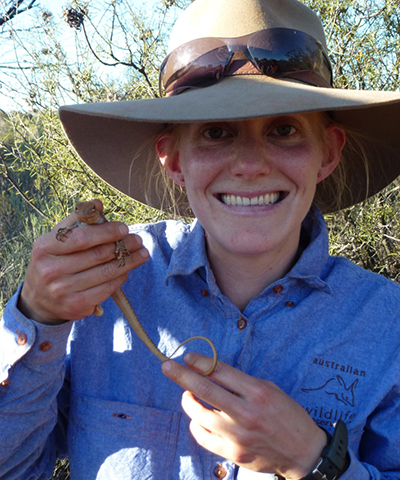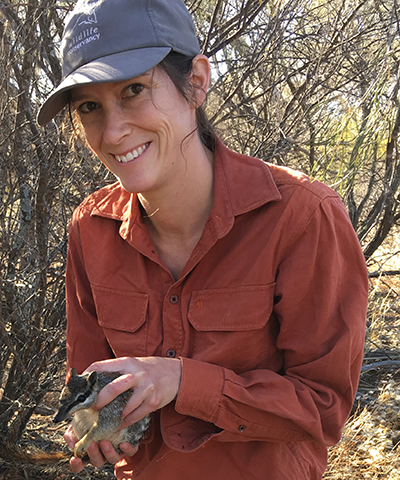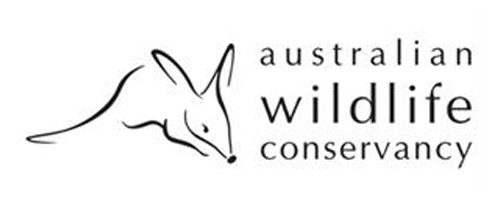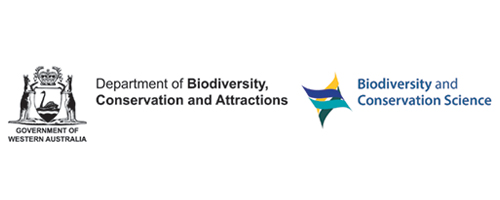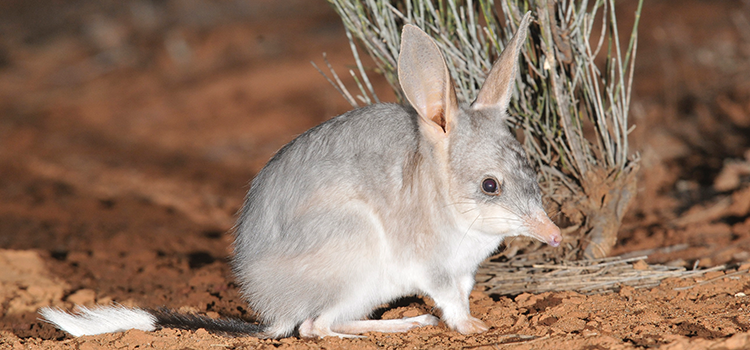
Research in Brief
Australian Wildlife Conservancy is undertaking a major project to re-establish populations of 10 regionally-extinct mammals, including nine threatened species, at Mt Gibson Wildlife Sanctuary, Western Australia. The reintroductions will integrate monitoring and research activities in order to improve the conduct of future reintroductions in Australia.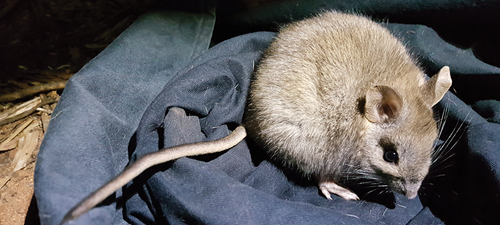
Greater stick-nest rat. Photo: Noel Riessen
Why is the research needed?
Australian mammals have suffered major declines and extinctions due to predation by feral cats and foxes. As a result, extensive areas of central and southern Australia have lost most of their small-medium sized terrestrial mammal fauna, with knock-on consequences for the ecological processes in which these species participate (e.g., seed and spore dispersal, soil and litter disturbance, herbivory and predation).
Feral predator-free ‘safe havens’ are highly effective at conserving threatened mammals and a key action of the Australian Government’s Threatened Species Strategy. The Australian Wildlife Conservancy (AWC) manages four large feral predator-free areas on mainland Australia along with the 5,000 hectare world heritage listed Faure Island. As Australia's leading proponent of conservation fencing, the organisation is in the process of developing a further four mainland predator-free projects.
When complete, these sanctuaries are expected to support populations of at least 20 threatened mammal species.
Research is needed to improve the success of reintroductions and the long-term management of reintroduced populations and host environments. 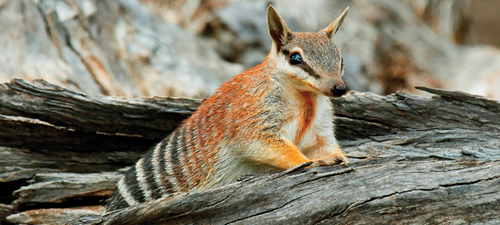 Numbat. Photo: AWC / W Lawler
Numbat. Photo: AWC / W Lawler
How will the research help?
The research involves the development and trial of practical actions for recovery of threatened species and the trial of exclusion/enclosure methods. The outcomes of the research will inform the conduct of future reintroductions, increasing the likelihood that reintroductions will lead to increased populations of threatened species.
AWC is undertaking a major project to re-establish populations of 10 regionally-extinct mammals, including nine threatened species, at Mt Gibson Wildlife Sanctuary, Western Australia.
The threatened mammals are being reintroduced to a fenced 7800 hectare ‘safe haven’ from which feral cats and foxes have been eliminated. To date, five species - Red-tailed Phascogale (Phascogale calura), Numbat (Myrmecobius fasciatus), Greater Bilby (Macrotis lagotis), Woylie (Bettongia penicillata) and Greater Stick-nest Rat (Leporillus conditor) have been reintroduced to Mt Gibson, with the remaining species - Banded Hare-wallaby (Lagostrophus fasciatus), Western Barred Bandicoot (Perameles bougainville), Chuditch (Dasyurus geoffroii), Brush-tailed possum (Trichosurus vulpecula) and Shark Bay Mouse (Pseudomys fieldi) to be reintroduced from 2017. Reintroductions are being conducted in stages, allowing comparison of outcomes for different source populations and techniques. 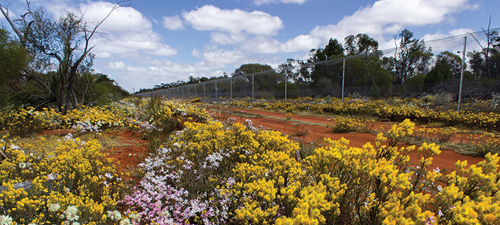 Feral predator-proof fence at Mt Gibson. Photo: AWC / J Kalinkina
Feral predator-proof fence at Mt Gibson. Photo: AWC / J Kalinkina
A suite of research projects are being integrated into the reintroduction project at Mt Gibson. The aim of the research is to obtain information that can help improve the long-term success of reintroductions to safe havens across Australia. Important questions include:
- How does the success of reintroductions vary with source populations (wild, captive bred) and/or release method (hard, or soft release)? For example, a soft release could include a period of acclimatisation and supplementary water, feeding and shelter.
- What is the optimal genetic composition of founding populations? How should genetic diversity be maintained in safe havens over time?
- What are the habitat preferences of reintroduced species? Are they similar to those of remnant populations, or do habitat preferences relax in the absence of feral predators?
- What are the consequences of reintroductions for local fauna, vegetation and ecological processes?
What research activities are being undertaken?
Research activities include:
- Tracking the outcomes of reintroductions, using radio/GPS collars, camera traps, live traps, nest-boxes and other types of monitoring, to determine survival, home range, habitat use and other attributes of reintroduced animals. These outcomes are compared with animals from different source populations (for example wild vs captive-bred) to identify optimal reintroduction methods for each species.
- Genetic analysis and modelling, to determine the optimum source of founders and long-term genetic management of reintroduced populations.
- Surveys of fauna, vegetation and ecological processes, to determine the response of the host environment to reintroductions.
- Testing different survey methods including live trapping, transect surveys, camera trapping and genetic mark-recapture from scats, in order to develop robust, cost-effective monitoring protocols.

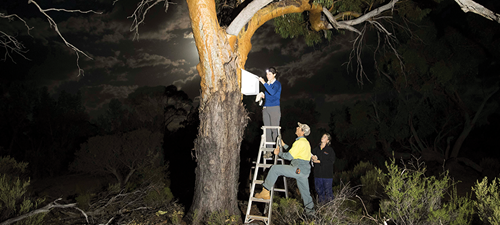 Red-tailed Phascogale release. Photo: AWC
Red-tailed Phascogale release. Photo: AWC
Who is involved?
Reintroductions and associated research are being conducted by AWC. Additional advice and assistance with sourcing animals is being provided by the WA Department of Parks and Wildlife, other state government agencies, species recovery teams, Perth Zoo, Adelaide Zoo and other members of the Zoo and Aquarium Association.
Researchers from The University of Melbourne, Murdoch University and University of Sydney are collaborating on specific reintroduction projects.
AWC is seeking to involve the Badimaya Yamatji, the Aboriginal people who speak for the Mt Gibson area, in the research.
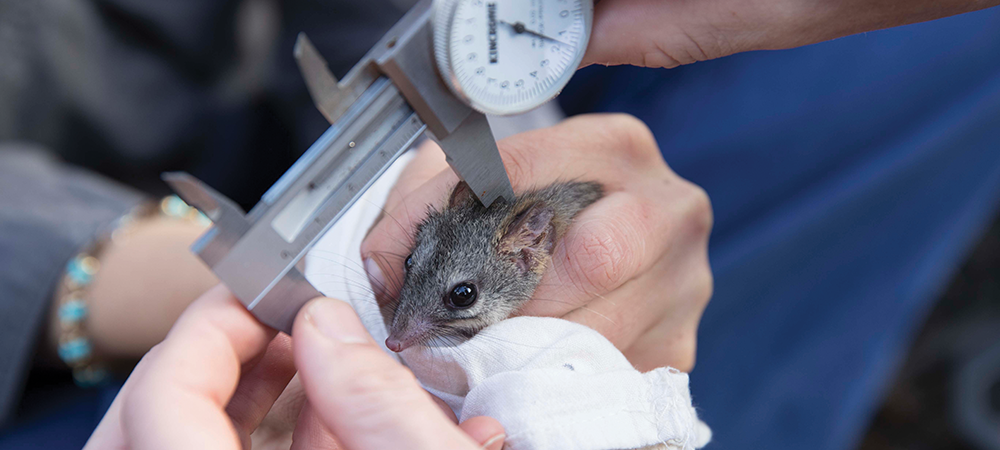 Red-tailed Phascogale. Photo: AWC
Red-tailed Phascogale. Photo: AWC
Where is the research happening?
The research focuses on reintroductions at Mt Gibson, Western Australia.
When is the research happening?
Research is being conducted around reintroductions that began in 2015 and will continue to 2020.
More Information
For more information about research at Mt Gibson, contact:
Michael Smith, AWC Regional Ecologist South West Michael.Smith@australianwildlife.org
General information on the project is on AWC’s website: www.australianwildlife.org
Top image: Greater Bilby. Photo: AWC / W Lawler
